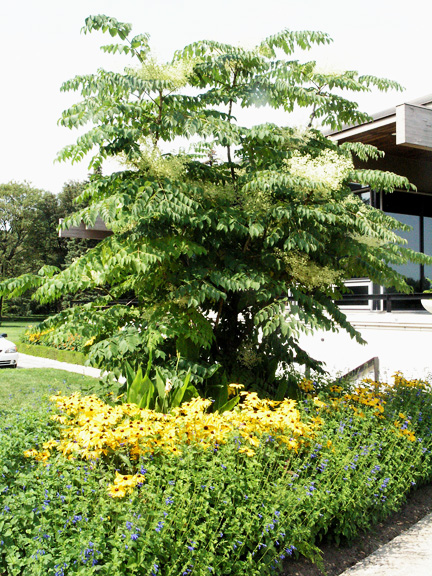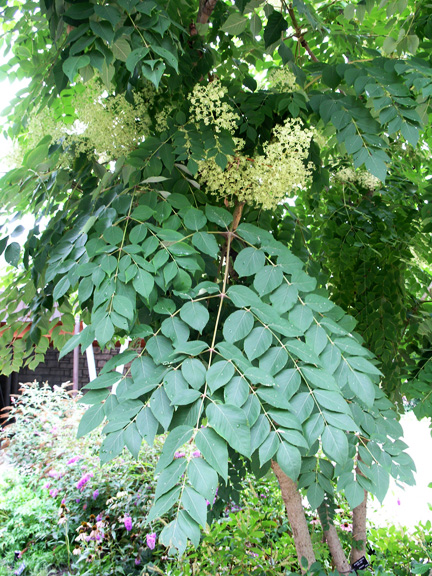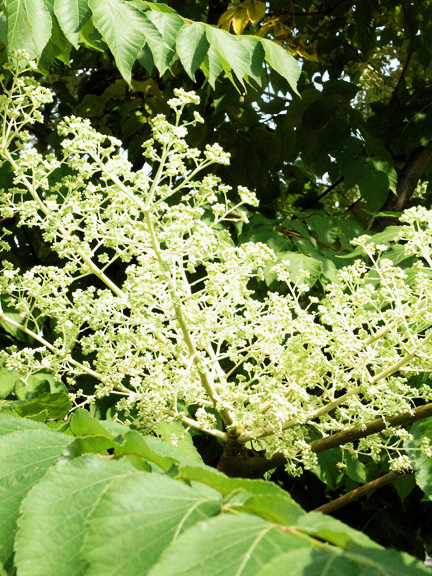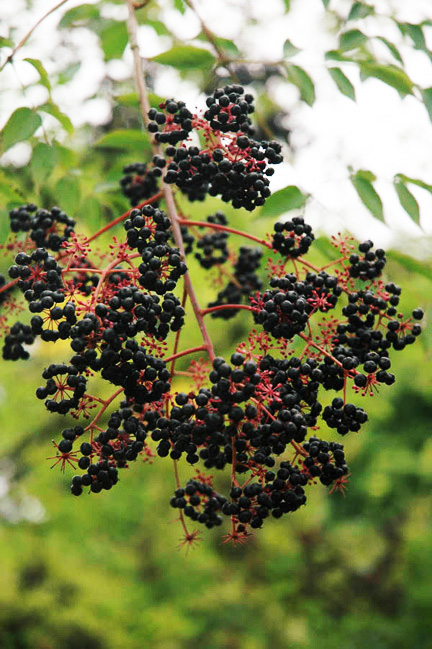
Woody > Aralia > Aralia elata > Aralia elata
Aralia elata
Japanese Angelica Tree
Origin: Introduced and naturalized in the Southern United States.
Mike's
Opinion


"
An intersting plant that should be used with caution, both for the thorny stems and its desire to travel through suckering roots. Stunning both in flower and fruit, the fruit however can be intoxicating to the birds causing them to crash into windows. The fruit also temporarily stains the pavement.
Michael Pascoe, NDP., ODH., CLT., MSc. (Plant Conservation)
"
| Family |
| Araliaceae |
| Genus |
| Aralia |
| Species |
| elata |
| Category |
| Woody |
| Type |
| Tree (deciduous) |
| Pronunciation |
| USDA Hardiness Zone |
| 4 |
| Canadian Hardiness Zone |
| 2 - 5a |
| RHS Hardiness Zone |
| H7 |
| Temperature (°C) |
| -35 - (-29) |
| Temperature (°F) |
| -30 - (-20) |
| Height |
| 5 m |
| Spread |
| 5 m |
Photographs
Description and Growing Information
Flowering Period
| General Description |
| A contemporary looking small tree or large shrub with large bipinnately compound leaves, large pale cream inflorescences and small black fruit. |
| Landscape |
| As a specimen or accent plant, very contemporary in appearance. Needs some control as the roots sucker and the plant may travel. |
| Cultivation |
| An easy to grow plant in full sun, it requires well drained soil and it is advisable to contain the suckers as they may spread into other nearby plantings. |
| Shape |
| Flat crowned with few lateral branches. |
| Growth |
| Fast |
| ID Characteristic |
| A tree with little lateral branches, the stems emerging from the ground like walking sticks but often the thickness of a broom handle or greater, often covered in short spines. |
| Pests |
| I have seen some wilt in it causing the removal of some stems which the plant needs periodically regardless. |
| Bark/Stem Description |
| Smooth, with many spikes along it, always multi stem. |
| Flower/Leaf Bud Description |
| Large U shaped bud scars are present along the stem, the buds themselves are not visible. |
| Leaf Description |
| large 40cm leaves, fine bipinnately compound, medium dark green, almost tropical in look. |
| Flower Description |
| A large (20cm) upright pale cream panicle. |
| Fruit Description |
| Produced in late summer and persisting into the late autumn. Large clusters of small purple black fruit. |
| Colour Description |
| Autumn colour of little significance. |
| Texture Description |
| Medium textured tree. |
| Notable Specimens |
| The Niagara Parks Botanical Gardens, Niagara Falls, Ontario and The University of Western Ontario, London, Ontario. |
| Propagation |
| By removal of suckers or stratify seed at 4°C for 90 days. Root cuttings collected in the autumn and cut into 50 mm lengths and insert vertically into pots or flats barley covering the top. Water and place in a cold frame until growth appears and then pot individually. |
References
Widely available.




.jpg)